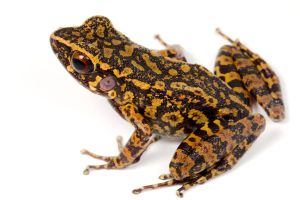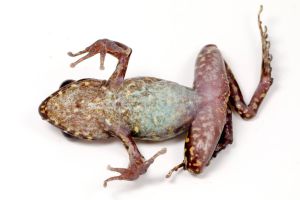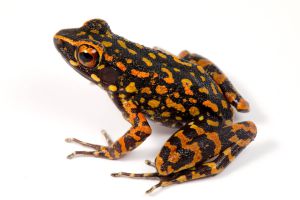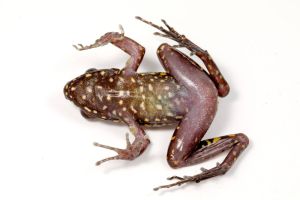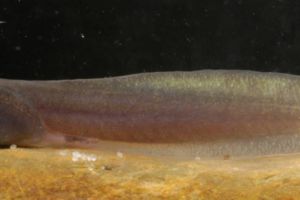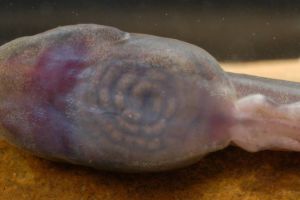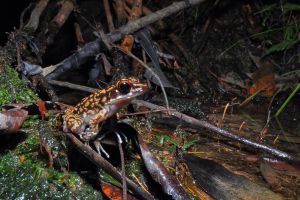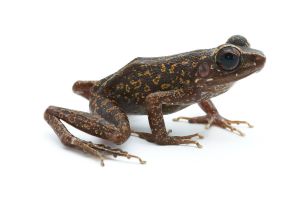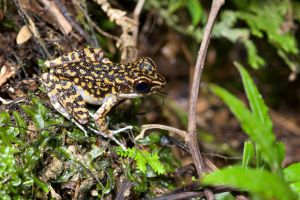
Frogs of Borneo

Frogs of Borneo

Frogs of Borneo

Frogs of Borneo

Frogs of Borneo

Frogs of Borneo

Frogs of Borneo

Frogs of Borneo

Frogs of Borneo

Frogs of Borneo

Frogs of Borneo
picturata
Spotted Stream Frog
Hylarana (Pulchrana) picturata and H. (Pulchrana) signata belong to a species group that is not yet well understood. On the island of Borneo, this group likely comprises more than one distinct species. The two species are (apart from genetic evidence) primarily distinguished by external pattern: H. signata is striped, while H. picturata is spotted.
Hylarana picturata is typically associated with small lowland streams. Males usually reach a snout–vent length of around 40 mm, while females can grow to almost 70 mm. This species prefers rocky streams (in contrast, we observed H. signata more often at streams with slow current and soft sediment).
The body of Hylarana picturata is slender to moderately robust, with moderately long limbs and a relatively narrow head. The snout is moderately long, and the tips of the digits are slightly swollen. Webbing extends to about half the length of the toes. The dorsal skin is granular in texture. The dorsal coloration is black, marked with yellow to red spots and angular blotches. A distinct colored line runs from the snout to the eye and continues along the upper eyelid. There is no continuous stripe from the eye to the groin. The upper surfaces of the limbs are banded. The venter is dark gray with scattered cream spots. The tympanum is distinct and black. The eyes are big (as applies generally to all species in the subgenus Pulchrana). The iris is coppery, with a narrow reddish ring around the pupil and a dense black reticulate pattern.
The tadpoles are black with a bluish sheen. They have moderately high tail fins and long tails. The fins are covered with numerous skin glands that become visible under favourable lighting. The iris features a distinct red ring around the pupil. The tadpoles are very similar to those of H. signata; distinguishing features still need to be established. Tadpoles inhabit stagnant or slow-moving water and are often found in streamside pools containing accumulations of leaf litter. They specialize in using the spaces within piles of submerged leaves, where they remain concealed during the day. At night, they may emerge to the surface, at which time their coloration becomes noticeably paler.
Version tracking
-
13.08.2025
edited
